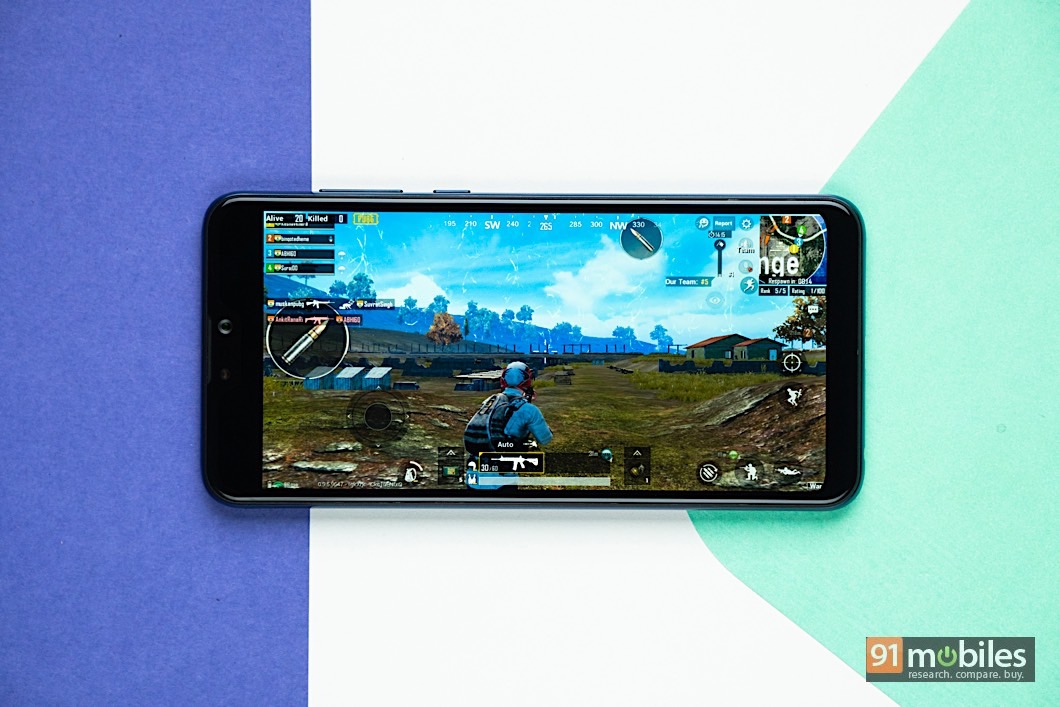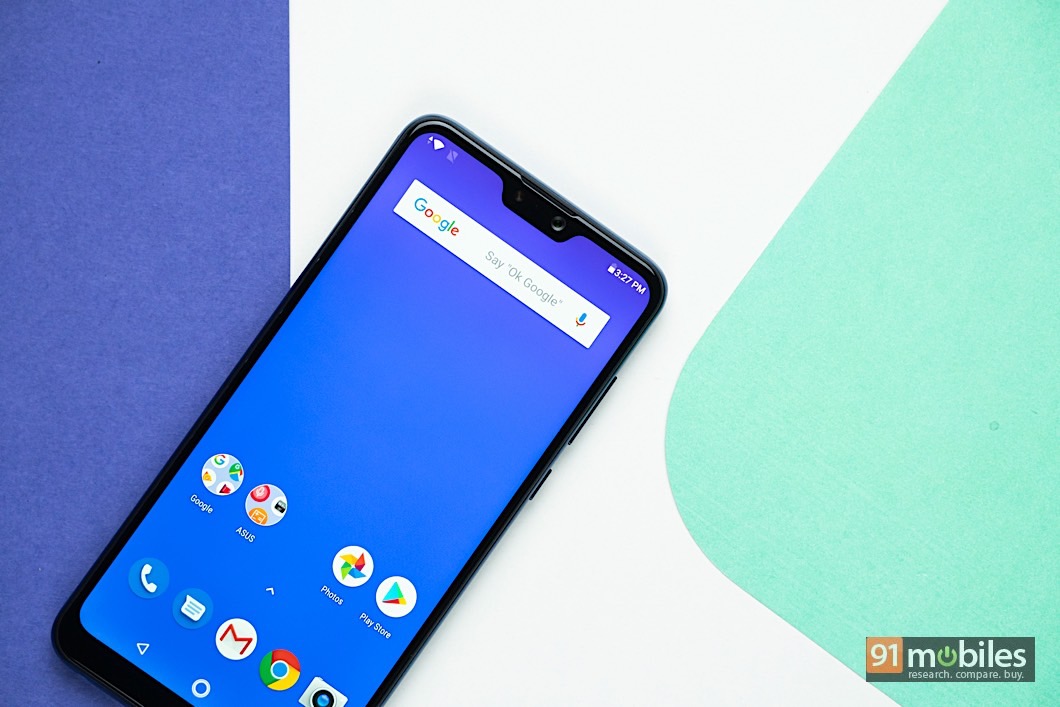“With the ZenFone Max Pro M2, ASUS has yet another budget powerhouse on its hands”
The ASUS ZenFone Max Pro M1 (review) was a gamechanger for the brand. Not only did it prove to be a noteworthy rival to the popular Xiaomi Redmi Note 5 Pro (review), but it also catapulted ASUS back to centre-stage. Just six months after the Pro M1’s launch, ASUS has launched the smartphone’s successor in the form of the ZenFone Max Pro M2. The device is a significant upgrade, and looks set to take on the competition from Xiaomi, Honor and Realme in the Rs 15k segment. The Pro M2 goes in sale in India today, and if you’ve been contemplating picking up the device, read our review before you decide.
Specs at a glance
| Display | |
| Size | 6.26 Inch |
| Resolution | 1080 x 2280 pixels |
| Performance | |
| CPU | Quad core, 1.95 GHz + Quad core, 1.8 GHz, Snapdragon 660 |
| RAM | 4 GB |
| Storage | |
| Internal memory | 64 GB |
| External memory | Up to 2 TB |
| Battery | |
| Capacity | 5000 mAH, Li-Polymer, Non removable |
| Talktime | Up to 40 Hours (3G) |
| Camera | |
| Primary camera | 12 MP + 5MP |
| Secondary camera | 13 MP |
| Connectivity | |
| Network support | Dual SIM 4G |
| Other options | Wi-Fi, Bluetooth 5.0, GPS |
| Others | |
| Security | Fingerprint sensor, Face unlock |
| Operating system | Android 8.1 Oreo |
Design and display
![ASUS ZenFone Max Pro M2_9]()
The ZenFone Max Pro M2 looks nothing like a budget phone. ASUS has completely overhauled the boring, metal design of the Pro M1 and replaced it with a curved glass back panel that extends to the edges. My review unit came in a gorgeous blue hue – it’s more like a mix of ash grey and deep blue, and the end result is satisfyingly original. The back panel reflects light in various patterns, and is also surprisingly comfortable to hold. The curves make it more grippable than most glass phones I’ve used this year, but I’d still put a case on it – both to avoid mishaps and keep the smudges at bay. There’s a vertical dual camera and flash setup at the rear, with a fingerprint sensor in the middle. The phone gets dual nano-SIM card slots along with a dedicated microSD card slot, and sports a 3.5mm audio jack as well. Unfortunately, ASUS has retained the older micro-USB standard, which other brands like Nokia and Realme have exchanged for Type-C.
The ZenFone Max Pro M1 features a 6.26-inch display with full HD+ resolution and a 19:9 aspect ratio. There’s a narrow notch up top that houses the front camera, dedicated LED flash, notification LED (this can be disabled) and sensors. Barring the thicker bezel near the chin, the Max Pro M2 sports an all-display design, making for a an immersive viewing experience. The display outputs sharp text, deep contrasts and good viewing angles, making it a pleasure both for reading and for watching video. There is an Ambient display feature, but this can only be enabled for notifications, and doesn’t work as an always-on display. Interestingly, the ZenFone Max Pro M2 features Gorilla Glass 6 protection for the front panel, and ASUS claims it’s the only budget device to offer this.
Cameras
![ASUS ZenFone Max Pro M2_6]()
The dual cameras on the ZenFone Max Pro M2 consist of a 12MP primary shooter with f/1.8 aperture, paired with a 5MP depth sensor. The rear cameras offer AI-based scene detection, 4K video recording and EIS. The front camera is a 13MP f/2.0 unit. The camera app has several features including shooting modes, filters and beauty mode options, but the interface is outdated, with haphazardly-placed icons.
When it comes to image quality, the ZenFone Max Pro M2 has one of the best cameras I’ve seen on a budget smartphone, capable of consistently churning out sharp, detailed images. The colours are slightly oversaturated, which might not appeal to purists, but will be appreciated by the average user who wants to share photos on social media. I was pleasantly surprised by the portrait mode as well – the camera does a decent job of detecting edges, and you can get some impressive bokeh shots. Portrait mode images weren’t too grainy either, which is an issue I’ve found on even more premium phones. In low-light, images tend to be noisy but usable, provided your subject is still. The slightest movement however will cause motion blur. The front camera was disappointing in comparison to the rear, with skin appearing over-smoothened and whitened, even with the beauty mode turned off. In some cases, images seemed quite washed out as well. Portrait mode isn’t available on the selfie camera yet, but it will come as an update later along with EIS.
Software and Performance
![ASUS ZenFone Max Pro M2_13]()
ASUS seems to have phased out its custom ZenUI interface in favour of a more or less stock version of Android. The Max Pro M2 runs Android 8.1 Oreo, and is slated to get the Pie update in January. Pre-loaded apps include Facebook, Messenger and Instagram, but apart from this, the software is devoid of bloatware. There are two ZenMotion gestures that let you double tap to turn off the display and double tap to wake it. Neither were reliable, requiring multiple attempts to work on most occasions. This wasn’t the only bug I noticed – in the camera app the shutter button wasn’t very responsive, and sometimes required a second press. The most annoying bug though was viewing an image in the gallery after taking the photo. This caused the auto-brightness to dim aggressively, and I had to manually increase the brightness in every instance. ASUS is quite proactive when it comes to issuing software updates though, so I’m confident these issues will be rectified.  On the performance front, the Max Pro M2 is powered by the dependable Snapdragon 660 chipset. The phone is available in three configurations – 3GB RAM + 32GB storage, 4GB RAM + 64GB storage and 6GB RAM + 64GB storage. I had the mid-tier 4GB RAM variant for review, which gives you about 53GB storage to use out of the box. The microSD card slot supports expansion up to 2TB. The powerful processor and stock Android software is a match made in heaven – navigating the interface, multi-tasking and gaming were smooth as silk. The fingerprint sensor is fast and responsive, and you also get a face unlock feature. The latter takes a shade longer to get you to the homescreen, but it’s still fast. There’s no IR sensor unfortunately so face unlock won’t work in the dark.
On the performance front, the Max Pro M2 is powered by the dependable Snapdragon 660 chipset. The phone is available in three configurations – 3GB RAM + 32GB storage, 4GB RAM + 64GB storage and 6GB RAM + 64GB storage. I had the mid-tier 4GB RAM variant for review, which gives you about 53GB storage to use out of the box. The microSD card slot supports expansion up to 2TB. The powerful processor and stock Android software is a match made in heaven – navigating the interface, multi-tasking and gaming were smooth as silk. The fingerprint sensor is fast and responsive, and you also get a face unlock feature. The latter takes a shade longer to get you to the homescreen, but it’s still fast. There’s no IR sensor unfortunately so face unlock won’t work in the dark.
The 5,000mAh battery on the ZenFone Max M2 Pro is one of its biggest highlights. You can expect about 6-7 hours of screen on time on the phone, and I only needed to charge it every other day. In our video loop battery drain test, the phone lasted an impressive 19 hours and 41 minutes. Unfortunately there’s no fast charging supported, with the bundled charger taking nearly 3 hours to recharge completely.
Verdict
![ASUS ZenFone Max Pro M2_4]()
The ZenFone Max Pro M2 is an every way an upgrade over the Pro M1, but more importantly, is a dangerous rival to the Xiaomi Redmi Note 6 Pro (review), Realme 2 Pro (review) and Honor 8X (first impressions) in the budget segment. ASUS has priced the Pro M2 competitively as well – starting at Rs 12,999 for the base variant and going up to Rs 16,999 for the top-end version – making sure it will appeal to budget buyers. With the ZenFone Max Pro M2, 2018 has ended on a high note for ASUS. We’ll have to see if the winning streak continues in the coming year.
Editor’s rating: 4 / 5
Pros:
- Stylish, premium design
- Two-day battery life
- Impressive rear cameras
- Competitively priced
Cons:
- Selfie camera beautifies images
- No USB Type-C
- A few bugs in the software
Photos by Raj Rout
 Asus Zenfone Max Pro M2 Asus Zenfone Max Pro M2 | vs |  Xiaomi Redmi Note 6 Pro Xiaomi Redmi Note 6 Pro |
 Asus Zenfone Max Pro M2 Asus Zenfone Max Pro M2 | vs |  realme 2 Pro realme 2 Pro |




































